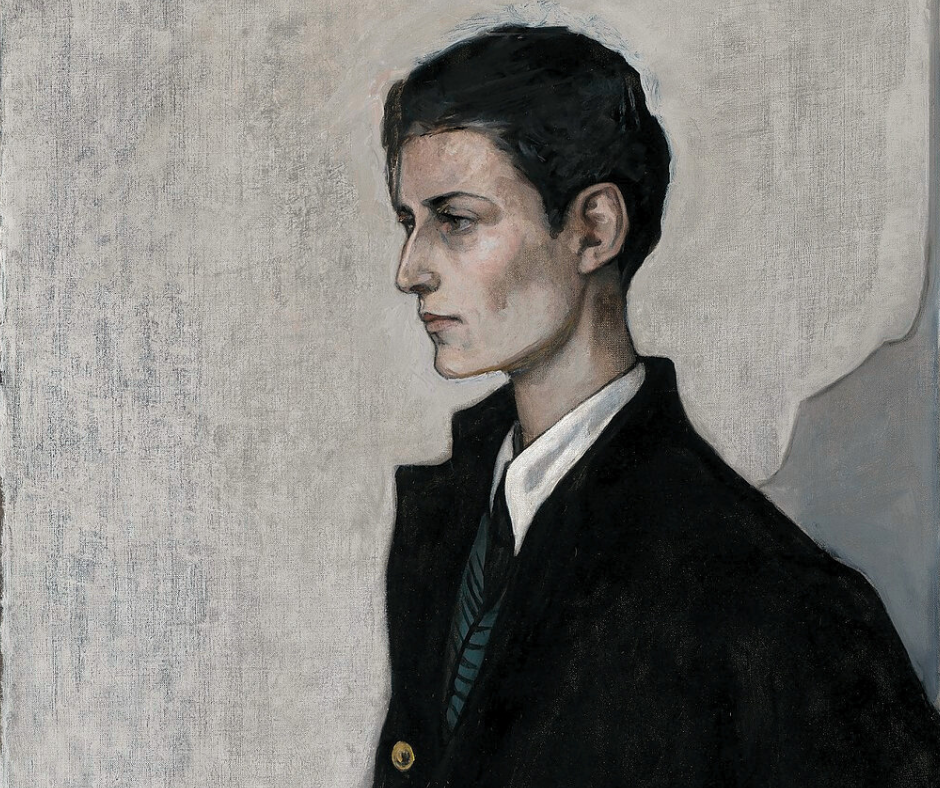
Romaine Brooks: Bucking Trends & Challenging Convention
Summary
Reflection Questions
Journal Prompt
Romaine Brooks was an American painter active in the early 20th century. She carved a distinct and wholly unparalleled niche in art history with her unique approach to portraiture and subject matter. Known for her muted color palette and elegant, androgynous figures, Brooks’ work stood in stark contrast to the vivid and often flamboyant styles popular in her era. Her significance in art history extends beyond her technical prowess; it lies in her defiance of the conventional artistic trends and societal norms of her time. Brooks challenged the traditional representations of gender and femininity in art, opting instead for more complex, introspective, and often non-conformist depictions. This rebellious approach not only set her apart from her contemporaries but also positioned her as a pioneering figure in exploring themes of gender and identity, making her work profoundly relevant to modern discussions in art and feminism.
Early Life and Formative Years
Romaine Brooks, born Beatrice Romaine Goddard in 1874, had an upbringing marked by complexity and strife, which later influenced her artistic trajectory. Born in Rome to an affluent American family, Brooks’ early life was characterized by frequent relocations across Europe and the United States, following her parents’ tumultuous relationship and her mother’s unstable mental health.
Her childhood was largely devoid of pleasant memories, affection, and stability, a theme that later permeated her artistic work. Brooks’ father died when she was a child, and she was subsequently raised by her mother, who was emotionally distant and neglectful. This challenging early environment played a significant role in shaping Brooks’ independent character and her perspective on society’s conventions, particularly regarding the roles and expectations of women.
Initial Exposure to Art and Early Influences

Brooks’ initial exposure to art was largely self-directed and unconventional, much like the rest of her life. She began painting as a means of escape and self-expression, finding solace in the creative process.
Her early artistic influences were diverse, ranging from the Renaissance masters she encountered during her European travels to the Symbolist and Aesthetic movements of the late 19th century. These early experiences as a poor art student provided her with a broad, eclectic foundation upon which she would later build her unique style.
Brooks’ artistic vision was also influenced by her personal experiences, particularly her feelings of isolation and nonconformity, which drove her to explore themes of identity, introspection, and the human psyche in her work. This early period set the stage for her later career, where she would fully develop her distinctive approach to portraiture and challenge the prevailing norms of her time.
Romaine Brooks’ Education
Romaine Brooks was the only female student at the Académie Colarossi in Paris. The Académie Colarossi was one of the progressive art schools in Paris during the late 19th and early 20th centuries that admitted women, providing an alternative to the École des Beaux-Arts, which did not accept female students until 1897. Brooks attended the Académie Colarossi at some point after she moved to Paris in 1901. The time Brooks spent there was a significant period in her development as an artist, offering her formal training and exposure to the vibrant artistic community of Paris.
Romaine Brooks’ Artistic Style and Development
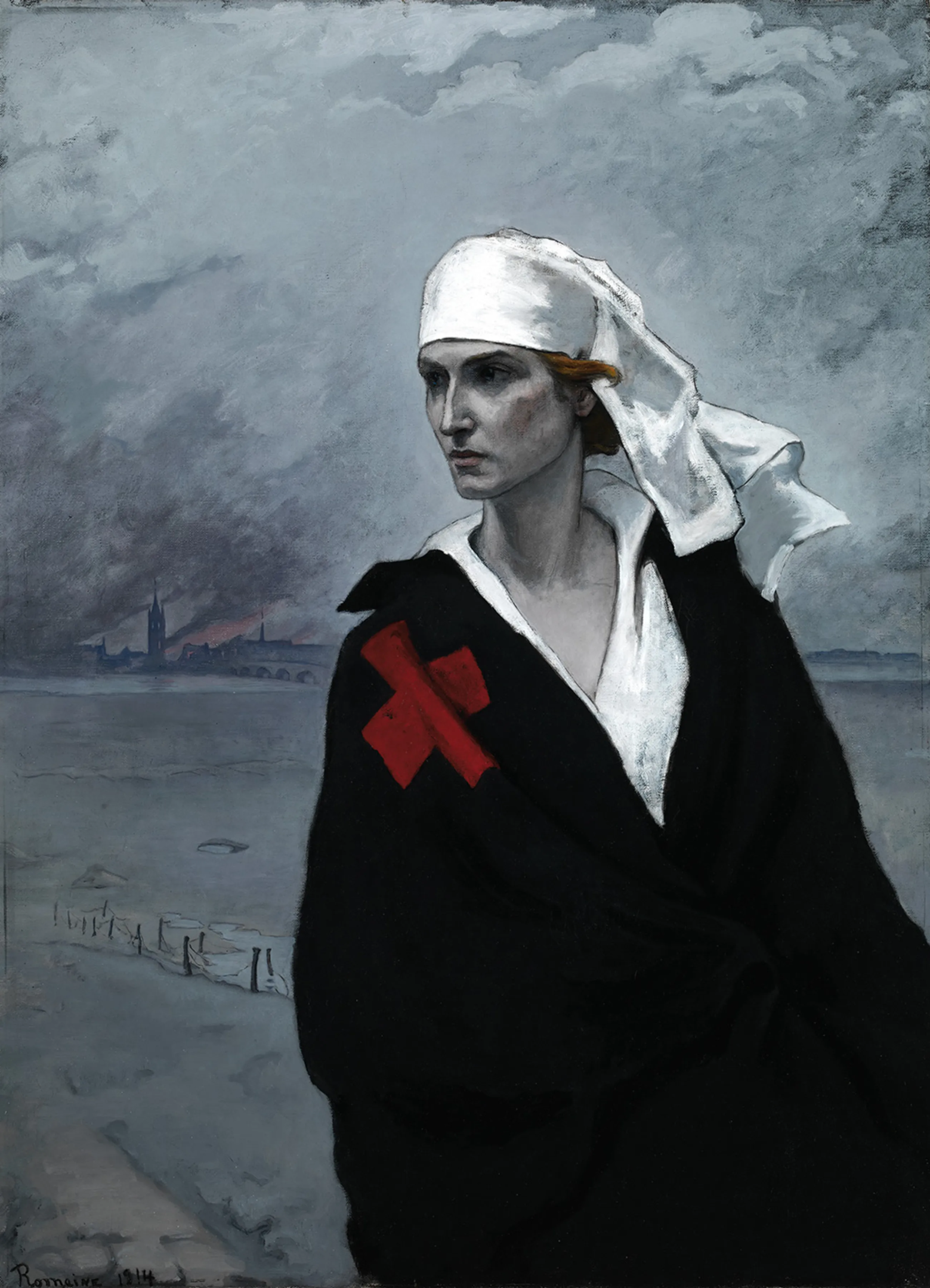
Romaine Brooks’ artistic style is distinguished by its subdued color palette, often dominated by shades of gray, which created a sense of understated elegance and introspective mood in her work. This use of limited color, along with her preference for simplified, almost sculptural forms, set her apart from the more vivid and detailed styles prevalent in her time.
Brooks’ compositions are notable for their refined, minimalist approach, often focusing on a single figure set against a nondescript or abstract background. This simplicity in composition allowed her to concentrate on the psychological depth of her subjects, who were frequently depicted as androgynous figures.
These subjects, often women dressed in masculine attire or portrayed with an ambiguous gender presentation, were revolutionary for the time and became a hallmark of her work. Brooks crafted an entirely different style than her contemporaries.
How Brooks’ Personal Experiences and Identity Influenced Her Art Practice
Brooks’ personal experiences and identity profoundly influenced her artistic expression. Her tumultuous upbringing and feelings of alienation are reflected in the solitary, introspective nature of her subjects. Her own identity, particularly her sexuality and nonconformist lifestyle, played a crucial role in shaping the themes of her art.
Brooks, a lesbian in an era when such an identity was neither accepted nor openly discussed, often explored the complexity of gender and identity through her work. Her portraits, frequently of women who defied traditional gender norms, were not just representations of physical likeness but also expressions of a deeper, often unspoken, personal and social narrative.
Evolving Influences
Romaine Brooks’ artistic influences were diverse and evolved over the course of her career, reflecting her unique position in the art world as both an insider and an outsider. Her work was influenced by a mix of personal experiences, the broader artistic movements of her time, and her individual explorations in art. Brooks was influenced by the Symbolist and Aesthetic movements, which emphasized emotion, mood, and personal expression over realistic representation. This influence is evident in her use of symbolic elements and her focus on capturing the inner world of her subjects.
Her unique color palette, characterized by subdued, almost monochromatic tones, shows the influence of Tonalism, an artistic style that emerged in the late 19th century. Tonalism emphasized atmosphere and shadow, often through the use of muted colors, which Brooks adeptly used to create her distinctive, introspective portraits.
Brooks’ interest in the human form and portraiture was likely influenced by the classic works of the Renaissance period. Her structured compositions and the dignified poise of her subjects echo the formal qualities of Renaissance portraiture.
Brooks’ own identity and experiences as a lesbian woman in the early 20th century significantly influenced her art. She often portrayed androgynous and non-conformist figures, challenging traditional gender norms and exploring themes of identity and sexuality. Living in Paris, Brooks was exposed to the thriving artistic community of the early 20th century. While she maintained her unique style, the creative environment of Paris and interactions with other artists, writers, and intellectuals would have provided a rich source of inspiration and influence.
Although Brooks’ style was distinct from the main currents of Modernism, she was creating during the same period and in the same circles as many modernist artists. Her work can be seen as a parallel or counter-narrative to the dominant trends of the time, offering a more introspective and less abstract approach to exploring the human condition.
Brooks’ style remained idiosyncratic and distinctive throughout her career, setting her apart from her contemporaries and placing her as a unique figure in the history of art. Her work is a testament to how personal vision and experiences can profoundly shape an artist’s approach, regardless of prevailing trends.
Comparison of Her Work to Prevailing Art Styles of the Time
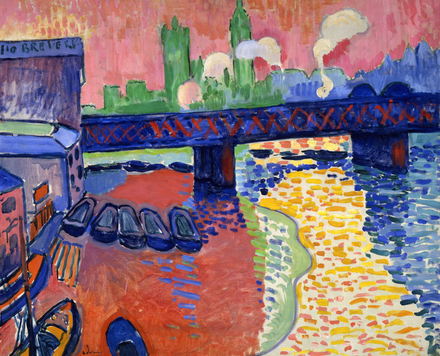
When compared with the prevailing art movements of her time, such as Impressionism and Fauvism, which celebrated vibrant colors and dynamic brushwork, the art of Romaine Brooks was markedly different. Her muted palette and focus on the psychological rather than the physical aspects of her subjects contrasted sharply with the bright, often outdoor scenes of the Impressionists or the wild hues and strong forms of the Fauvists.
This contrast was not merely aesthetic but also conceptual; while many of her contemporaries focused on capturing the fleeting moments of life and the external world, Brooks delved into the internal, introspective world of her subjects. Her work, therefore, stands out in the early 20th century for its unique focus on introspective themes, handled with a subtlety and depth that was ahead of her time.
However, it’s worth noting that some scholars see her muted palette and exploration of the psyche as akin to certain Surrealist or Expressionist tendencies.
Key Works and Their Significance
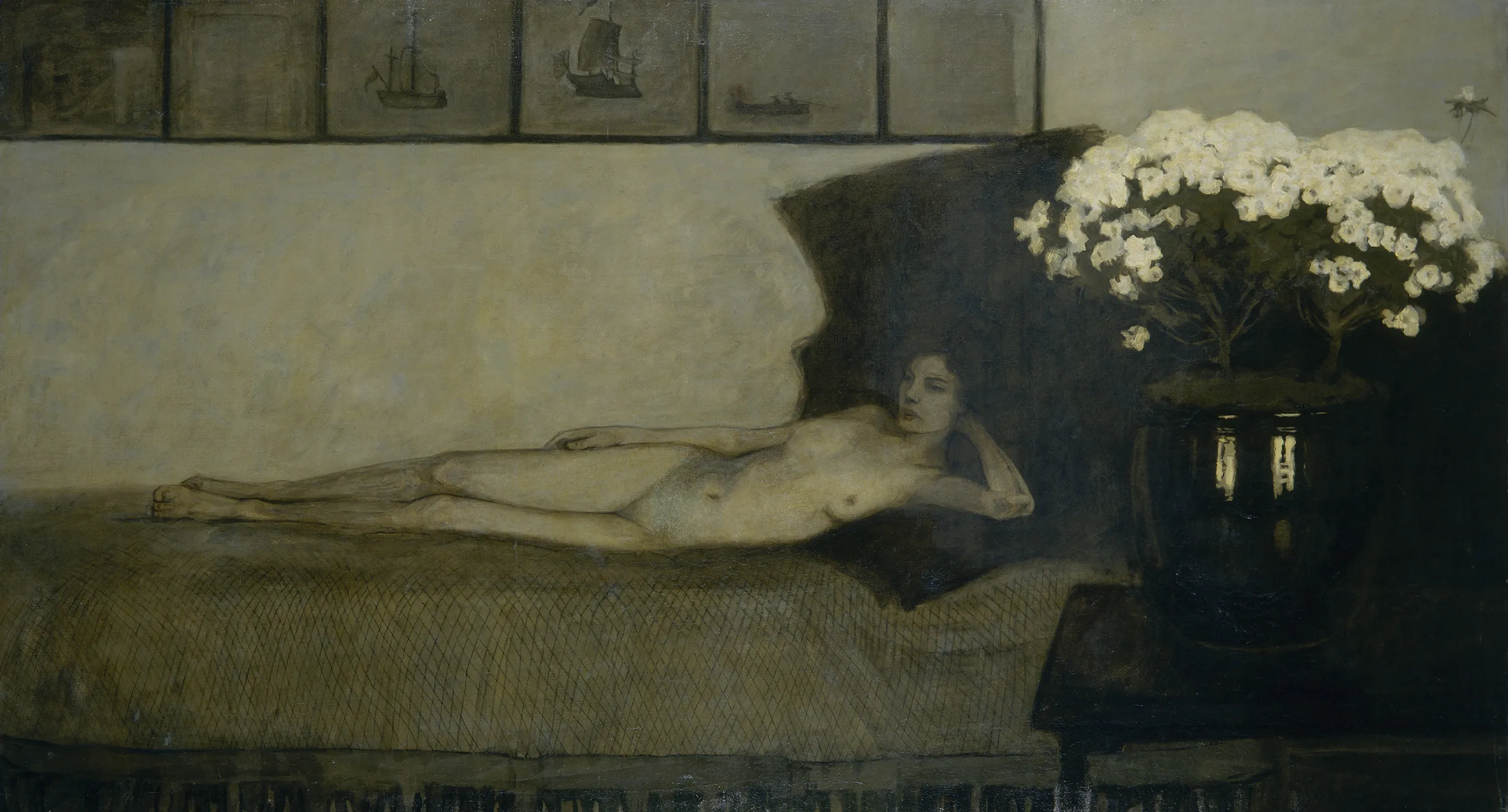
Among Romaine Brooks’ significant body of work, “Self-Portrait” (1923) and “The White Azaleas” (1910) stand out for their artistic and thematic depth. In “Self-Portrait,” Brooks presents herself in an androgynous and stylish manner, defying traditional gender norms.
This painting is remarkable not just for its technical mastery but for its bold statement on self-identity and gender expression. The muted color palette and the direct gaze of the subject create a sense of introspective intensity.
“The White Azaleas,” on the other hand, is a departure from her usual portraits. This work (pictured above) captures the delicate beauty of the azaleas, yet the painting is imbued with a sense of melancholy, reflective of Brooks’ skill in conveying mood and emotion through subtle use of color and composition. Both works are exemplary of her ability to combine technical skill with deep emotional and psychological insight.
Themes in Brooks’ Work
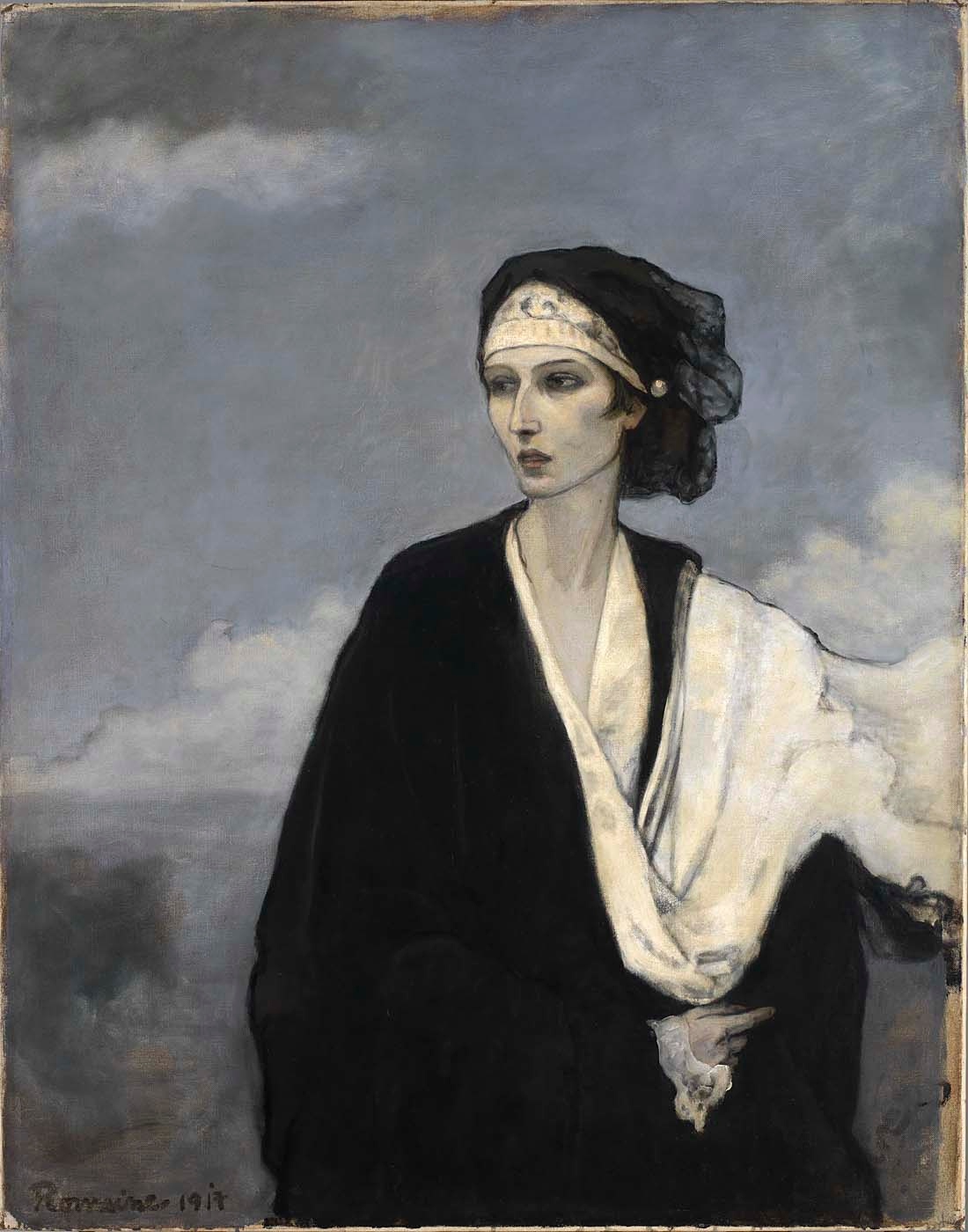
The themes and symbolism in Brooks’ paintings often revolve around identity, solitude, and non-conformity, mirroring her personal life experiences and societal views. Her works frequently feature solitary figures, conveying a sense of isolation and introspection.
This theme is a likely reflection of Brooks’ own feelings of alienation from mainstream society due to her unconventional lifestyle and sexual orientation. The androgynous appearance of many of her subjects challenges traditional gender roles and norms, a bold statement in an era of rigid societal expectations. Brooks’ use of a subdued color palette and minimalist composition further enhances the introspective and often somber mood of her paintings.
Through these elements, Brooks’ art transcends mere portraiture or aesthetic expression, delving into deeper discussions on identity, societal norms, and the human psyche. Her work is thus significant not only for its artistic merit but also for its contribution to broader conversations on gender and society in the early 20th century.
Challenging Societal Norms
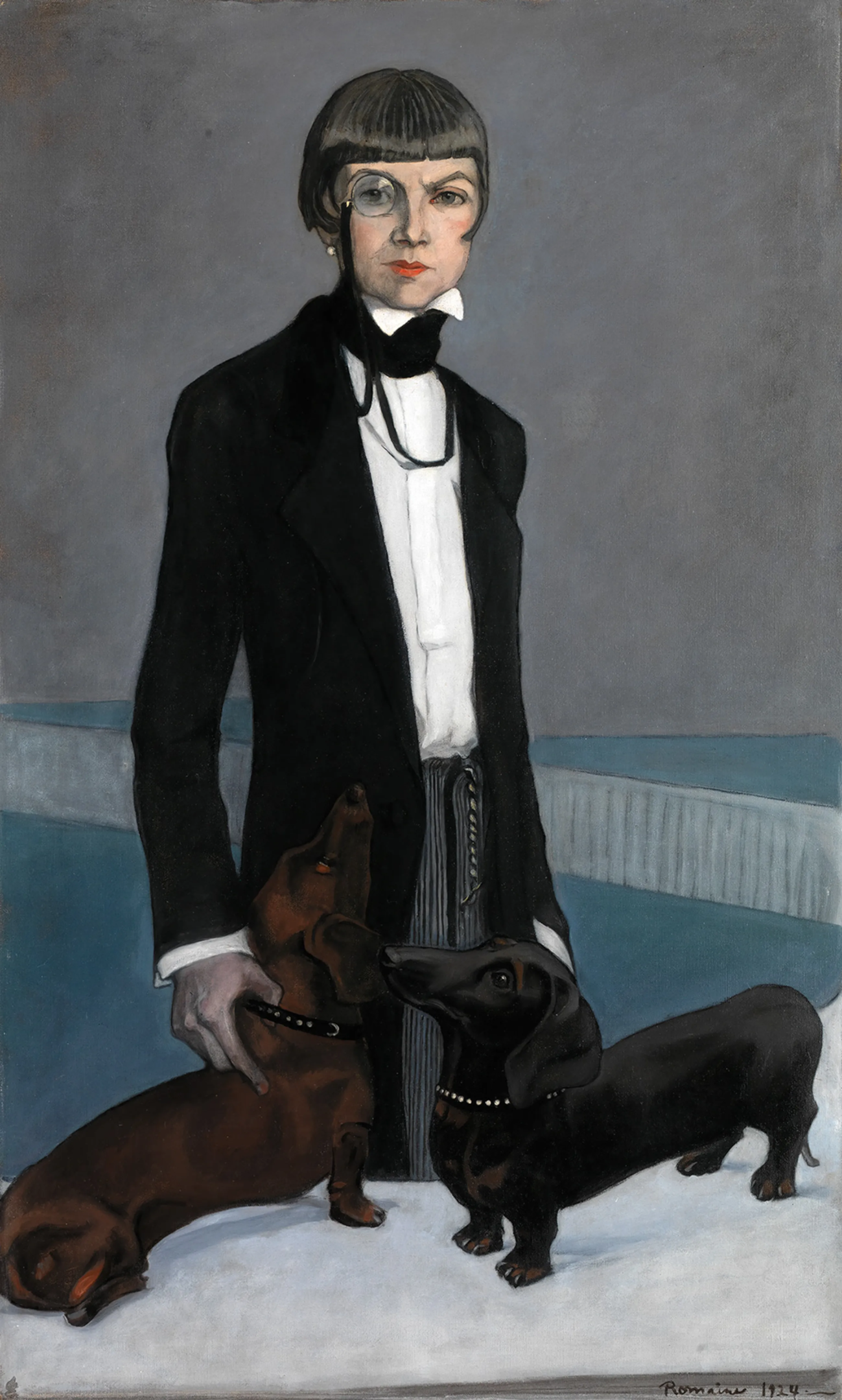
Romaine Brooks’ personal life was inextricably linked to her artistic expression, particularly in her representations of gender and sexuality. Living openly as a lesbian during a time when such a lifestyle was both socially and legally condemned, Brooks’ defiance of conventional gender roles was not just a personal stance but also a central theme in her art.
Her portraits often depicted women in androgynous or masculine attire, challenging the traditional depictions of femininity prevalent in the art of her era. This choice of subject matter was a direct reflection of her own identity and the circles in which she moved, which included many prominent figures from the LGBTQ community.
Brooks’ work, with its nuanced exploration of gender and sexuality, was not only a form of personal expression but also a subtle form of social commentary, questioning and pushing the boundaries of societal norms.
Societal Context
The societal context of the early 20th century was marked by rigid gender roles and expectations, particularly for women. In this era, the mainstream art world largely favored male artists and often relegated women to the roles of muses or subjects rather than recognizing them as artists in their own right.
Brooks’ work directly challenged these norms, not just in its content but also in its very existence. Her success as a female artist was itself a defiance of the expectations of the time. Moreover, her portrayal of women as complex, introspective individuals, often with an androgynous or masculine presentation, was in stark contrast to the prevailing artistic norms that favored more traditional, idealized representations of women.
Through her art, Brooks contributed an alternative narrative, one that celebrated diversity and complexity over conformity and stereotype. In doing so, she not only carved a space for herself in the art world but also contributed to the broader movement towards greater gender equality and acceptance of sexual diversity. Her work remains significant as a historical document of resistance against the restrictive societal norms of her time.
Romaine Brooks’ Life Beyond Art
Romaine Brooks’ life beyond her art was characterized by its nonconformity and independence, but she was not known as a teacher in a formal sense. Instead, her life was notable for several other aspects.
Personal Relationships and Social Circles
Brooks was known for her relationships within the bohemian and artistic circles of Paris. She had a long-term relationship with the writer Natalie Barney, a prominent figure in the Parisian literary and artistic scene whom Brooks met as a result of her participation in these circles. Her relationship with Natalie Clifford Barney was part of a larger network of intellectual and artistic women who were pushing the boundaries of societal norms, particularly in terms of sexuality and gender roles. While Natalie Barney was important, Brooks had many other lovers and friends who influenced her life and art.
She was connected with dozens of influential artists and writers of her time. Her salon in Paris was a gathering place for a significant circle of artists, writers, and intellectuals, many of whom were involved in exploring and challenging traditional ideas about art, gender, and sexuality.
Lifestyle and Identity
Brooks lived a life that was unconventional for a woman of her era. She was openly lesbian at a time when such a lifestyle was socially marginalized. Her identity and personal experiences deeply influenced her art, particularly her depictions of gender and androgyny. Brooks was also known for her distinctive personal style, often dressing in a manner that challenged traditional gender norms.
Later Years
In her later years, Brooks became somewhat reclusive. She continued to paint, although less prolifically, and lived a relatively solitary life. Despite her withdrawal from the social scene, she remained an influential figure for those interested in early modernist art and the history of LGBTQ+ communities in the arts.
Brooks’ Unpublished Memoir
Romaine Brooks wrote a memoir titled “No Pleasant Memories.” This memoir, which remains unpublished, offers insights into her life, experiences, and perspective on the world around her. The memoir is known for its candid and often stark recounting of her life, including her challenging childhood, her relationships, and her artistic journey. Technically it’s closer to an autobiography, and its tone is more complex than the title suggests.
The existence of this memoir adds another dimension to understanding Brooks as not just an artist but also as a person who lived a complex and unconventional life. It provides valuable context for her work and contributes to the understanding of her as an influential figure in early 20th-century art, particularly in terms of how she navigated and challenged the societal norms of her time.
Brooks’ life beyond her art was as complex and unconventional as the subjects of her paintings. Her experiences and personal journey were integral to her artistic expression and left a lasting impact on the art world, particularly in how gender and identity are represented.
Romaine Brooks’ Legacy and Influence in Art History
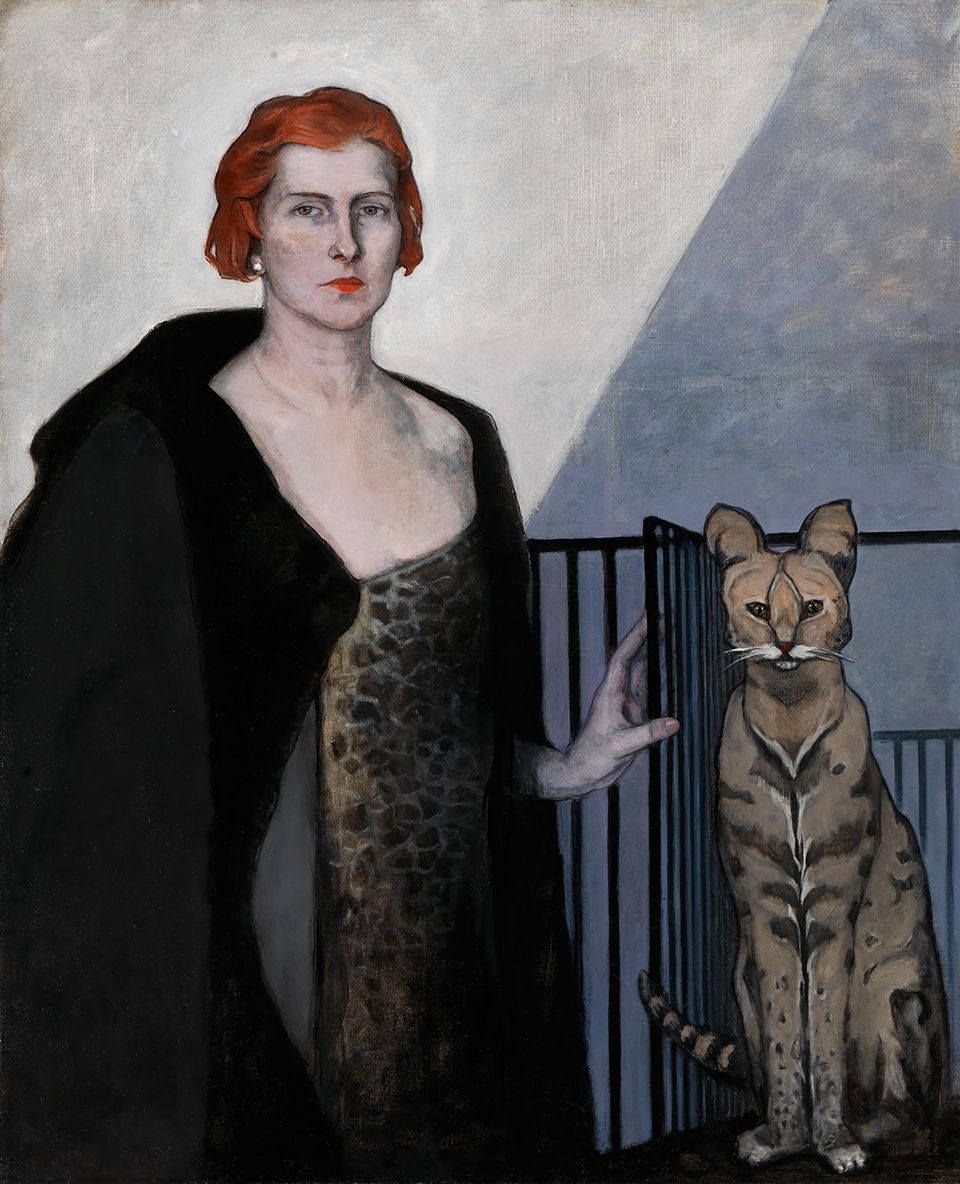
Romaine Brooks’ legacy in modern art history is characterized by her pioneering exploration of themes that were far ahead of her time. While her work may not have received the widespread recognition of some of her contemporaries during her lifetime, her contributions have gained considerable appreciation in retrospect.
In the context of modern art history, Brooks is regarded as a trailblazer for her unique aesthetic style and her bold representations of gender and identity. Her muted color palette and focus on introspective, androgynous figures have been recognized as precursors to some of the minimalist and gender-focused art that emerged in the later 20th century.
While Brooks somewhat faded from view for a time, it’s worth mentioning the 1970s feminist art history rediscovery of her, which has continued to influence the way her work is viewed. Brooks’ art is now celebrated for its subtle yet powerful challenge to conventional norms and for its nuanced exploration of the human psyche, making her an important figure in the narrative of early modernist art.
Influence on Other Artists
Brooks’ influence on subsequent generations of artists, particularly those exploring themes of gender and identity, is profound. Her portrayal of androgyny and non-conformist gender identities in art opened new avenues for artistic exploration, paving the way for artists to express diverse and complex views of identity in their work.
Brooks has become an icon in the LGBTQ+ community and among feminist artists, who see her as a leading figure in the representation of non-traditional gender roles and the celebration of queer identity. Contemporary artists who delve into similar themes often draw inspiration from Brooks’ ability to capture the depth and complexity of individual identity, breaking away from traditional and stereotypical portrayals.
Institutions Housing the Art of Romaine Brooks
Romaine Brooks’ art can be found in several prominent museums, reflecting her significance in the art world. Some of these museums include the following, which you may visit should you wish to see Brooks’ work on display.
Smithsonian American Art Museum, Washington, D.C.: This museum houses a substantial collection of Brooks’ works, including many of her well-known paintings. The Smithsonian has been instrumental in preserving and showcasing her legacy. Her work is in the museum’s permanent collection. Several years ago, the Smithsonian American Art Museum hosted a series of lectures about Romaine Brooks’ art, including one presented by Joe Lucchesi, who is an Associate Professor and Sexuality Studies program coordinator at St. Mary’s College.
The Brooklyn Museum, New York:Known for its extensive collection of feminist art, the Brooklyn Museum also includes works by Romaine Brooks, emphasizing her role in challenging traditional gender norms in art.
The Tate Modern, London: The Tate Modern has featured Brooks’ work in past exhibitions, acknowledging her influence in the broader context of modern art.
Musée d’Orsay, Paris: While primarily focused on French art, the Musée d’Orsay has included Brooks in exhibitions, recognizing her impact on the Parisian art scene of the early 20th century.
The Art Institute of Chicago, Illinois: This museum has also been known to exhibit works by Romaine Brooks, contributing to the understanding of her role in modern art.
The National Museum of Women in the Arts, Washington, D.C.: Dedicated to celebrating women’s achievements in the visual, performing, and literary arts, this museum recognizes Brooks’ contributions as a pioneering female artist.
These institutions, among others, hold and exhibit Romaine Brooks’ works, ensuring her art and its influential role in challenging societal norms and conventions remain accessible and appreciated by diverse audiences.
Brooks’ Critical Role in Expanding the Boundaries of Artistic Expression

As a woman artist with a legacy of original art that ignored trends and represented her life, Brooks challenged conventional ideas and cemented her position in art history. Reflecting on the importance of Brooks’ contributions, it is clear that her work played a critical role in challenging and expanding the boundaries of artistic expression. By deviating from the normative depictions of women and exploring deeper, more introspective themes, Brooks not only enriched the artistic discourse of her time but also laid the groundwork for future explorations into subjects that were once considered taboo.
Her courage in expressing her true self and the realities of those in her community through art set a precedent for authenticity and bravery in the art world. In this way, Brooks’ legacy is not just in the works she created, but in the broader impact she had on opening up spaces for diverse and honest expressions of identity and experience in the world of art.








